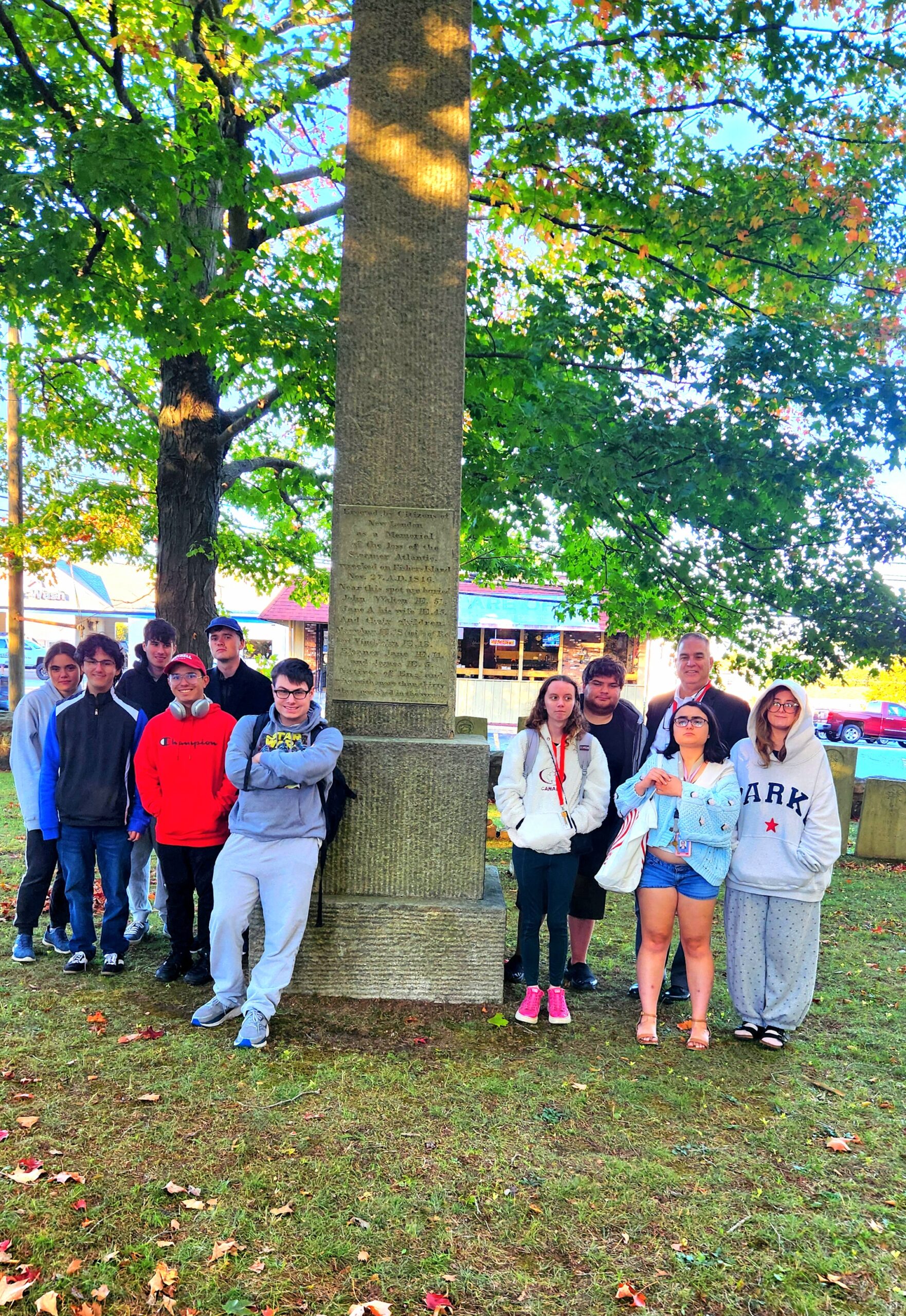Thames at Mitchell Students Present at Maritime Society Annual Meeting
Thames at Mitchell College students in the New London Stories class recently presented original historical research at New London Maritime Society’s (NLMS) annual meeting. The meeting was held at the Custom House Maritime Museum on Bank Street in New London. Prior to their presentation, students toured the museum to deepen their understanding of the region’s maritime history.
The mission of NLMS is to protect and preserve the Custom House, three area lighthouses, and Long Island Sound, and to promote, interpret, and celebrate the rich maritime life and history of the port of New London and the surrounding region.
Led by instructor Chris Kervick, the class presented “The Wreck of the Atlantic: The Journey of a Young Survivor.” The research paper examines the 1846 steamship disaster off the coast of New London. It follows the experience of a young survivor through extensive archival research and narrative storytelling.
The Times Community Newspapers also featured the paper as a cover story, highlighting the quality and depth of the students’ work and the real-world impact of the course.
Read the research paper:
The Wreck of the Atlantic: The Journey of a Young Survivor – Thames at Mitchell Blog
Explore more student research:
The Coles Family: A Glimpse into the Lives of a 19th Century New London Family of Color – Thames at Mitchell Blog
Frank T. Cable: New London Submarine Pioneer – Thames at Mitchell Blog
A Bohemian In New London – Thames at Mitchell Blog
History of Michael’s Dairy / History of New London – Thames at Mitchell Blog
About New London Stories
A research- and writing-focused course, New London Stories immerses students in local history while building critical academic skills. Through primary sources, archival materials, and collaboration with community partners, students produce publishable work that connects the past to the present. Over the years, the class has generated numerous research papers and articles. Works are shared with the broader community through public presentations, newspapers, and online publications.
First-Year Mitchell College students also study the rich history of the area in their New London: Then and Now course.
Thames at Mitchell Blog
Past and current student work from the course is featured on the Thames at Mitchell Blog, which showcases research papers in addition to program highlights.
Visit the Thames Blog:
https://thamesatmitchell.org/
About Thames at Mitchell College
The Thames at Mitchell College pre-college transition program helps students build academic, social, and independent living skills while experiencing college life. The program offers personalized support, small classes, and opportunities to engage in hands-on learning — including college-level coursework such as New London Stories — in a supportive campus environment.
Learn more about Thames at Mitchell College:
https://mitchell.edu/thames/

(Left) As part of their research, students in the New London Stories course visit the Walton family memorial at Cedar Grove Cemetery in New London.
(Above) The class, seated and facing the audience, presents its research at the New London Maritime Society annual meeting.
